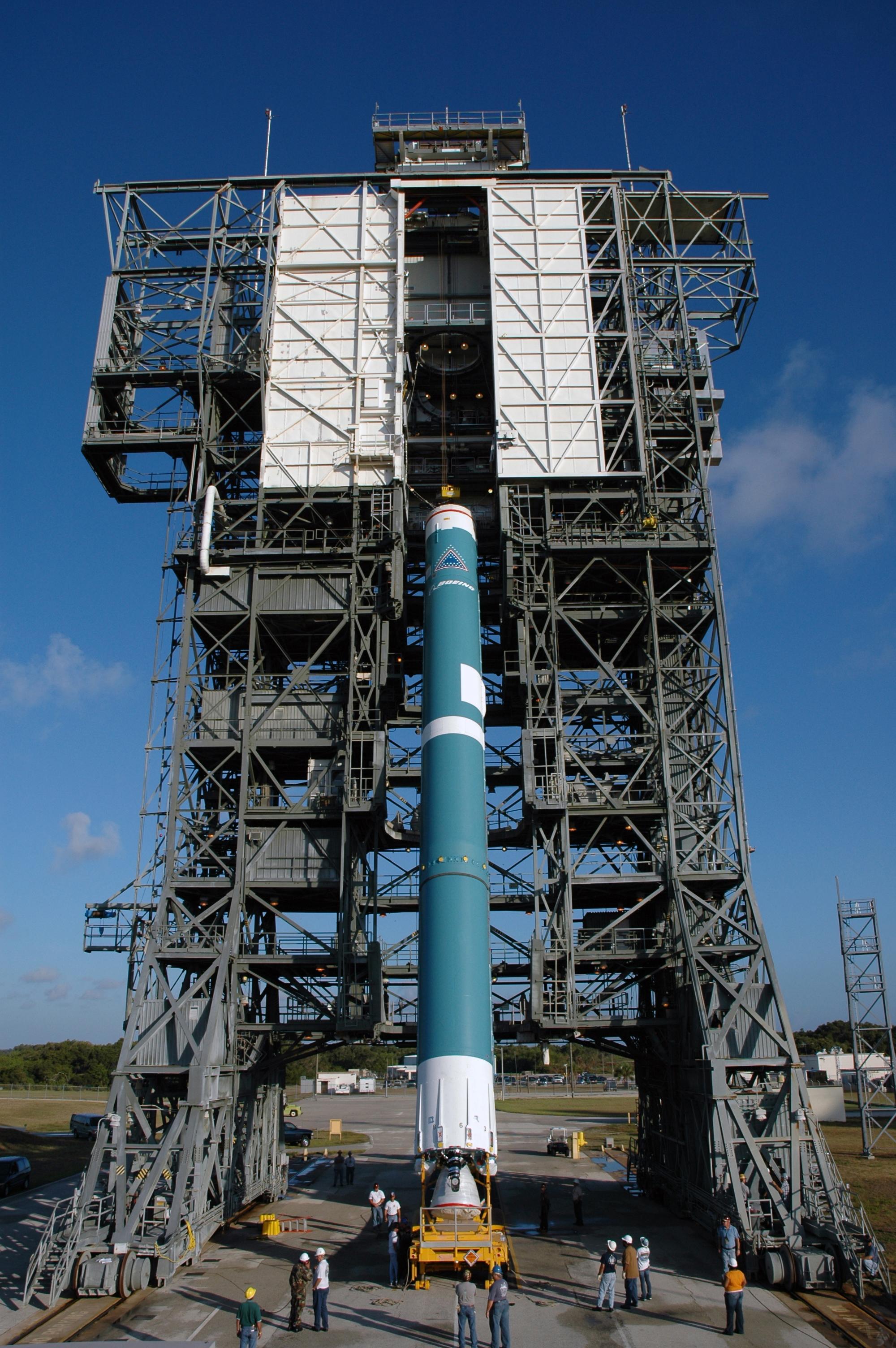- Cape Canaveral Air Force Station Launch Complex 17
Infobox Launch Pad
name = Launch Complex 17
caption =The first stage of the BoeingDelta II rocket, which launched NASA's Solar Terrestrial Relations Observatory (STEREO), is lifted into a vertical position for installation into the mobile service tower at Pad 17B
site =Cape Canaveral Air Force Station
location =28.446704°N
80.566022°W
short = LC-17
operator =US Air Force
tlaunches = TBC
pads = 2
inclination = 28° - 57°
pad1 = LC-17A
pad2 = LC-17B
status = Active
launches =TBC
first = Thor,August 30 1957
last = GPS 2R-19,2008-03-15
rockets = Thor
DeltaDelta II (current)
status2 = Active
launches2 =TBC
first2 = Thor,January 25 1957
last2 =GLAST ,2008-06-11
rockets2 = Thor
Delta
Delta II (current)
Delta III Cape Canaveral Air Force Station Launch Complex 17 is a launch site atMerritt Island ,Florida .It was first built in 1956 for the Thor ballistic missile program, but later was used to launch probes to the
Moon and planets, solar observatories and weather satellites. [http://www.ksc.nasa.gov/elvnew/messenger/lc17.htm NASA - http://www.ksc.nasa.gov/elvnew/messenger/lc17.htm] ]LC 17 at Cape Canaveral Air Force Station features two active
expendable launch vehicle (ELV) launch pads, 17-A and 17-B. The pads are run by theUS Air Force 's 45th Space Wing and have supported more than 300 military,NASA and commercial missile and rocket launches.Pad 17-A supported its first Thor missile launch onAugust 30 ,1957 , and Pad 17-B supported its first Thor launch onJanuary 25 ,1957 . The site was upgraded in the early 1960s to support a variety of more modern Expendable Launch Vehicles, which were derived from the basic Thor booster. The modern ELVs based on Thor came to be called the Delta family of rockets.Thirty-five early Delta rocket missions were launched from Complex 17 between the beginning of
1960 and the end of1965 . At that time the complex was run by the Air Force. The Air Force transferred Complex 17 toNASA in 1965, but the site was returned to the Air Force in1988 to support theDelta II program.As Delta II launches continued over the next decade, Pad 17-B was modified in 1997 to support a new, more powerful launch vehicle, the Delta III. The Delta III made its first successful launch debut on Pad 17-B
August 23 ,2000 .Among the major NASA missions launched from the complex were the Explorer and Pioneer space probes, all of the Orbiting Solar Observatories,
Solar Maximum , Biological Satellites (BIOS), Television Infrared Observations Satellites (TIROS ) andGeostationary Operational Environmental Satellite s (GOES).These probes and satellites have, among many other things, revealed much about the Moon and our neighboring planets and continue to provide people across the world critical weather information on a daily basis.
Notes
* [http://www.floridatoday.com/maps/launches/LC17Launches.htm Florida Today database of all launches] Dead link|date=March 2008
ee also
*Delta
*Delta II
*Delta III
*Merritt Island
*List of Merritt Island launch sites
*ThorExternal links
Wikimedia Foundation. 2010.
